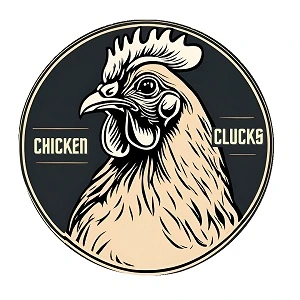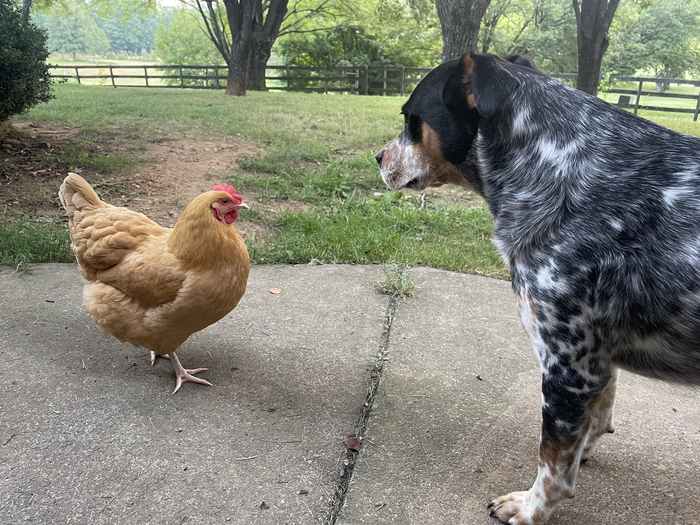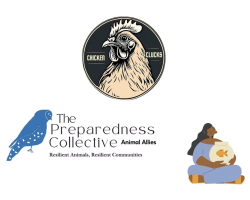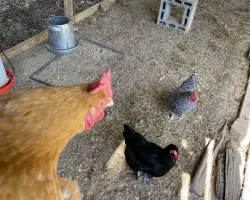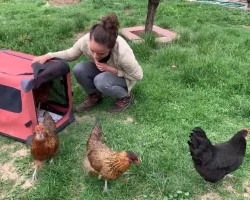Being an animal lover, I have always believed that chickens and dogs can live together peacefully. However, making sure that both your chickens and your furry family member can coexist safely is not easy. It requires patience, training, and a deep understanding of both animals and their instincts.
So, what came first? The chicken or the dog, and how can you make sure that your chickens and dogs live together in harmony?

Understanding Animal Instincts
Both chickens and dogs are born with instincts that were instilled in them long before we made them our pets. It is important to understand and recognize these instincts. That is, if you want to maintain peace and set up an environment that ensures harmony between the two.
All dogs are predators by nature, but their instincts may vary depending on breed. Herding dogs are naturally gentler around chickens, while other breeds may have a built-in drive to chase or attack. Chickens, however, are prey animals with related instincts. This means that they rely on flight, hiding, and the behavior of their flock to stay safe. Similarly, any unfamiliar animals or sudden movements can cause them to panic.
Training Your Dog to Accept Chickens
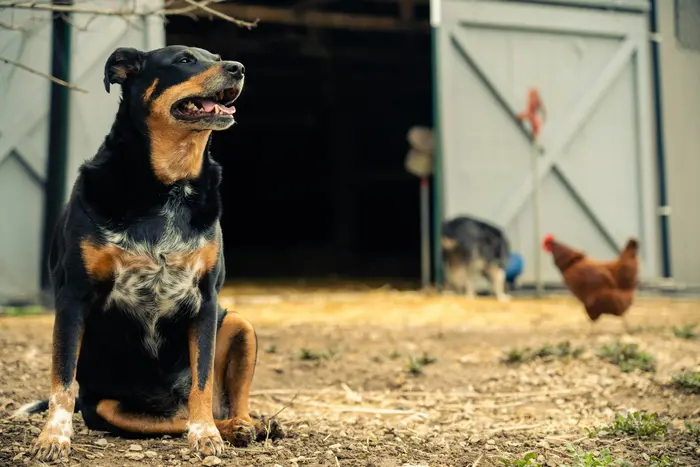
Training is crucial when it comes to first introductions. Even a well-trained dog may need a little bit of extra guidance when you are introducing them to your flock. Here are some important steps to follow to make sure that you facilitate a smooth introduction:
Starting with Basic Obedience Training
First and foremost, before you decide to introduce your dog to your flock, they should have mastered basic training commands. These include commands such as “sit, stay, leave, and come”. If this is not the case, I would recommend working on these commands before allowing your dog to meet your chickens.
Introduce Through a Barrier
The last thing you need is for your dog to attack one of your chickens upon meeting them. Therefore, a safe introduction will always start with physical separation. Allow your dog to look at the chickens from outside their coop or run. This allows him (or her) to get used to them without having direct contact.
Your dog is going to naturally be curious, and that is fine, as long as it is a calm curiosity. However, if your dog is excessively excited or aggressive, more training is going to be needed. Give your dog more time to get used to the chickens while observing them through a barrier. Always remember to reward them with treats and praise when they react positively. It may take some time, so try to be patient.
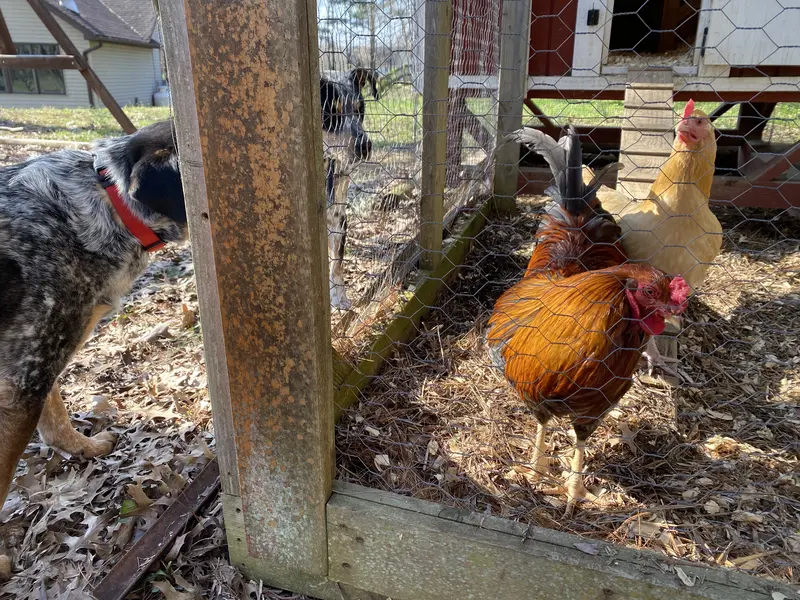
Leashed Introductions
Once your dog is more comfortable around your chickens, you can put him on a leash and allow him to be closer. Always remember to keep him in a controlled position and use commands such as “sit” and “stay”. If your dog fixates or tries to lunge at the chickens, redirect his attention by using a treat or a command to reinforce calm behavior.
Supervised Off-Leash Time
After a few visits, your dog may start to remain calm when they are on their leash. If this is the case, then you can try some off-leash time in the same area as your flock. If at any point your dog starts to become too excited or even aggressive towards the flock, take a step back and start again with the leash. With time and continued reinforcement, your dog will soon understand how they should behave around your chickens.
Setting Up a Safe Environment
To prevent any accidents or unneeded stress, you need to create a safe environment for both your dogs and your chickens.
Secure Housing for Chickens
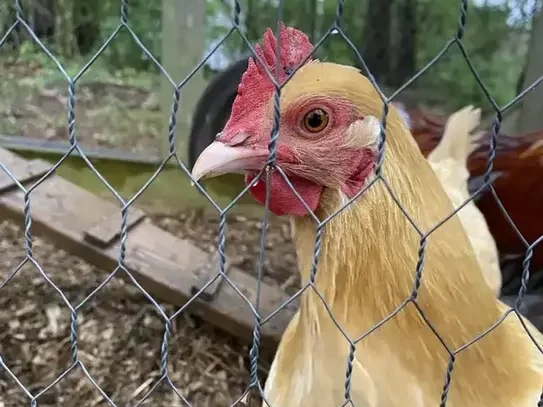
As a general rule, it is important to make sure that your chickens have a safe coop and run to protect them from not just your dog but any other potential predators. This can be done by using strong fencing to prevent unwanted animals from accessing the coop without your supervision. Make sure that your flock has enough space within the fence or boundary to move away from any threats, as well as roosting and hiding spots that they can use to feel more secure.
Supervised Free-Range Time
If you already have chickens that are used to free-range, you should always make sure that all their interactions with your dogs are supervised until you are completely confident that they will not be a hazard to your flock. A chicken tractor is a wonderful way to allow your chickens to graze safely while you keep your dog at a distance. If your dog reacts well to your chickens, then you can start to increase the time that they spend together as the trust builds.
Safe Zones for Both Animals
Both your chickens and your dogs need to have a safe space that they can retreat to if needed to prevent stress and possible conflict. For your chickens, this could mean a secure coop, roosts, bushes, or other areas that your dog cannot access. For your dogs, this could mean providing them with a comfortable space to relax away from your chickens as needed.
Recognizing and Managing Problem Behaviors
Even with proper training and supervision, there are certain signs that your dog may exhibit that require a little more attention. Here is what you need to look out for:
Dog Behaviors to Watch
- Fixation: If you notice that your dog is staring intensely at your chickens, you need to quickly redirect their attention.
- Chasing: Even a playful chase can quickly turn dangerous, so you need to ensure that your dog is never allowed to chase your chickens.
- Excessive barking: Dogs bark excessively when they are excited or frustrated, and this needs to be managed immediately to prevent your flock from becoming stressed.

Chicken Responses
When your dog is in the vicinity of the chickens, take note of how your chickens are acting. If they are constantly running around and making alarm calls, then this probably means that they are feeling uncomfortable around your dog. In some cases, roosters may try to defend the flock by pecking or attacking your dog. It is always important to monitor interactions to make sure that both sides are safe.
Breed Considerations
Most dogs can be trained to get along with chickens, but some breeds can be great candidates to promote a natural and easy coexistence. For instance, Labrador retrievers, Golden retrievers, Collies, and some spaniels are good choices if you plan to integrate your birds and your furry companions. However, Terriers, Huskies, Malamutes, and some hounds may need a little extra training to ensure that they have the best chance of existing peacefully with your flock.
Troubleshooting Common Issues
My dog is too excited!
Continue to use commands to reinforce calm behavior and increase training sessions until your dog starts to become calmer when they are around your flock.
My dog is chasing my chickens!
This should never happen. Do not allow your dog to chase your chickens. Rather, redirect their attention and remove them from the situation for an hour or two.
My chickens are afraid of my dog!
This is quite normal. Give your chickens some time to realize that your dog is not going to be a threat. Also, keep all interactions positive and allow them to retreat to their safe area if needed.
Final Thoughts
Chickens and dogs can easily live together in harmony, as long as you take the time to properly train your dog and set up safe environments for both your dogs and your chickens. Eventually, your chickens will learn to feel safe around your dog, especially if they do not feel threatened. Be patient, and in time, you will find them happily coexisting in the backyard, each adding their own charm to your home!
